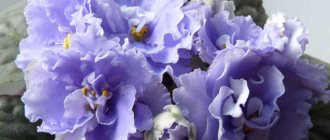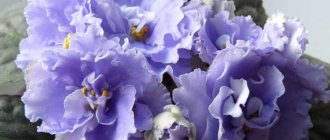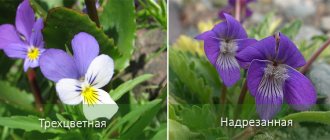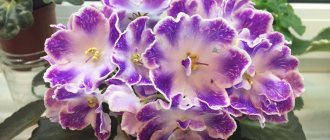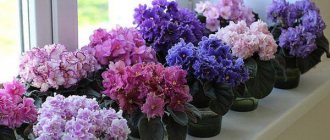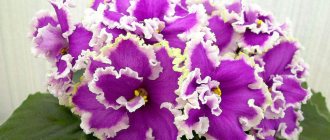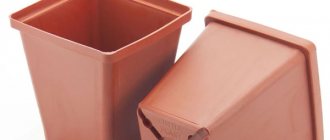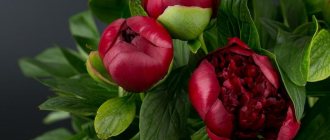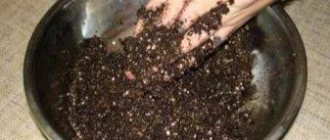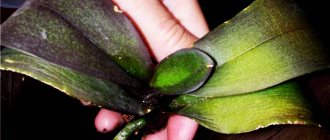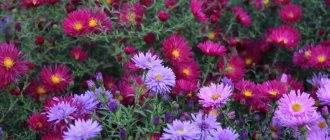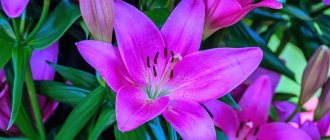Hello, dear reader! At the turn of spring and summer, not very noticeable, not always familiar to most, but surprisingly beautiful violets appear. They are not as large and bright as garden ones. However, wild and forest flowers have their own charm. Forest violets are pale lilac, light blue, a little mysterious. Their brighter (and more familiar) relatives are field violets.
All violets have common characteristics, primarily in the structure of the flower. They have a double perianth: a calyx of five free green sepals and a colored corolla of five petals. Violet petals vary in shape. The lowest one is usually the largest. In addition, it is equipped with a blunt spur where nectar accumulates. All violets have a fruit capsule that, when ripe, opens and scatters very small seeds. All these plants make up the genus Viola (Viola) of the violet family. Most are perennial herbs, some are annual and biennial. The species diversity is great - up to one hundred species are found in Russia alone.
What type of forest violets are they?
Forest viola is an excellent plant used for landscape design.
Wild violet is a plant belonging to the Violet family. Most often, forest wild violet can be found in the north, in harsh climates and low temperatures. Today there are more than 100 species of flower. A perennial plant consists of shoots no more than 15 cm in height and 5 petals that form on peduncles. Depending on the type of flower, it can be in different colors:
- purple;
- yellow;
- blue;
- white.
A variety of combined shades are also possible.
Briefly about the history of appearance
Forest violets originated in East Asia. It was from here that their spread to other regions began. They have been actively propagated in horticulture since 1893.
Breeders have bred many species. The most popular of them are “Pansies”, which can be found in different colors and sizes.
The most common type is “Pansy”
How are they different from indoor
The field violet is in no way related to the house flowers that are usually seen on windowsills. They belong to different families and require different conditions for their growth. But they are similar in appearance.
Important ! Homemade Saintpaulia does not tolerate water on the leaves or sunlight. This is detrimental to the plant. In contrast, forest violets are very unpretentious to conditions.
Living in an apartment
Indeed, the field variety can be grown in an apartment , and at the same time it will bloom regularly. To do this, you just need to follow all the rules for caring for indoor violets.
Field violets can grow both in the garden and in the house.
If propagation is necessary, gardeners need to:
- Open cleistogamous buds yourself;
- And plant the seeds like ordinary seedlings.
Common varieties, names
Violet Ek - description, varieties and characteristics of varieties
In the natural conditions of Russia you can find the following types of violets:
- “Pansy” or tricolor - this variety lives as a weed in the forest or fields. Flowering time begins in May and ends in September. The upper petals are blue and the lower petals are white.
- Swamp - blooms from May to August on moss-covered hummocks in the forest, swamps, and water meadows. The flowers are pale blue with dark veins.
- Viola arvensis or field white violet - blooms from April to September on open forest edges and roadsides.
- Dog - blooms in May, small blue flowers, grow in the field and on the edge of the forest.
- Altai - blooms twice a year, the first time from April to May, the second time from September to October. The plants are purple and blue with a yellow center, found on mountain slopes.
Important! Many species of meadow violet have become rare today and are included in the Red Book.
Viola Altai is characterized by the longest flowering
Features of this type
The growth of wild violets has one peculiarity. In nature, it tries to occupy as much area as possible. The same thing happens in the flowerbed.
Forest violet will actively grow, so shoots need to be pinched regularly to control the spread of the plant. When creating a beautiful landscape on your site, you can create a whole field of violets. They are used to form alpine slides.
If the forest viola is planted in the shade, its inflorescences will be pale, but this will extend the flowering time. Elevated areas are best suited for meadow violets so that moisture does not accumulate at the roots.
Swamp violet
Its leaves are quite large (up to 5–6 cm), rounded, heart-shaped at the base, on long petioles, collected in a basal rosette.
Swamp violet, contrary to its name, grows not only in swamps, but also in damp meadows and damp forests. In the forest where the photo was taken, there is clearly waterlogging, as there are areas overgrown with sphagnum moss.
True, the corolla of the marsh violet is usually yellowish or almost white, with purple veins. But there are also plants with pale lilac flowers.
Swamp violet (like dog violet) are perennial rhizomatous plants.
Recommendations for planting and caring for wild violets
Forest violas take root well in garden plots. But in order for them to grow well, you need to choose the right place for planting.
What kind of soil does he like, light, degree of moisture?
Violet Le - description, varieties and characteristics of varieties
The quality of soil needed for violets may vary depending on the type of plant. There are varieties that need slightly acidic soil, and some thrive only in loose soil.
Important ! In order for the plant to immediately take root on the site, it is recommended to collect the soil in which the violet grew under natural conditions.
Planting in open ground
One of the easiest ways to grow a wild flower is to separate the rosettes from the flowers and plant them in natural conditions. Active flowering begins the next season.
Features of planting seedlings
Violet can be propagated both by sowing and seedlings. The finished bushes are planted at a distance of 20 cm from each other. The soil should contain leaves, sand, peat and humus.
Planting forest viola on a personal plot
Features of planting seeds
To propagate meadow violets with seeds, you need to scatter them on top of the ground, water them and cover them with film.
Important ! Wild violet seeds are very small, which means they can dry out quickly. Therefore, they need to be sown immediately after harvest.
Unpretentiousness
In order for the plant to germinate well and become viable, regular watering and ventilation are necessary. Once the sprout is established, special care is no longer required.
Violet tolerates winter well and does not require additional shelter. It is not afraid of the sun, but it needs to be watered more often.
Notes
- For the convention of indicating the class of dicotyledons as a superior taxon for the group of plants described in this article, see the section “APG Systems” of the article “Dicotyledons”.
- Mayevsky P.F.
Flora of the central zone of the European part of Russia. — 10th ed. — M.: T-vo scientific publications KMK. - 2006. - P. 371. - ISBN 5-87317-321-5 - Illustrated guide to plants of the Leningrad region / Ed. A. L. Budantseva and G. P. Yakovleva. — M.: T-vo scientific publications KMK. - 2006. - P. 199. - ISBN 5-87317-260-9
- ↑ 1 2 I. A. Gubanov et al.
Illustrated guide to plants in central Russia. - T. 2. - M.: T-vo scientific publications KMK. - 2003. - P. 565. - ISBN 5-87317-128-9 - Gorchakovsky L.P. et al.
Key to vascular plants of the Middle Urals. — M.: Science. - 1994. - P. 316. - ISBN 5-02-004167-X - ↑ 1234
Nikitin V.V., 2006, p. 165-201. - Illustrated guide to plants of central Russia, vol. 2 / I. A. Gubanov, K. V. Kiseleva, etc. - M.: KMK Publishing House, 2003. - 565. ISBN 5-87317-128-9
- Atlas of habitats and resources of medicinal plants of the USSR. - M. - 1983. - P. 319.
- Illustrated guide to plants of the Leningrad region / Ed. A. L. Budantseva and G. P. Yakovleva. — M.: Scientific T. ed. KMK, 2006. - P. 199. - ISBN 5-87317-260-9.
- ↑ 1 2 Blinova K. F. et al.
[herba.msu.ru/shipunov/school/books/botaniko-farmakognost_slovar1990.djvu Botanical and pharmacognostic dictionary: Reference. allowance] / Ed. K. F. Blinova, G. P. Yakovleva. - M.: Higher. school, 1990. - P. 251. - ISBN 5-06-000085-0.
Pest prevention
Violet Blue Mist - description and characteristics of the variety
Preventative measures against parasite attacks include compliance with all necessary growing conditions. It is necessary to regularly inspect leaves and flowers.
If the plant is attacked by nematodes or clover cutworms, then treatment should be carried out already at the initial stage of infection. At this point, you can still use traditional methods. If there are a lot of insects, you can only get rid of them with the help of chemicals.
Can it be planted indoors?
The white forest violet, like other types of wild flowers, is very difficult to tolerate indoor conditions. They need a wide area to grow. In a small pot, the root system will rot. This will lead to death.
Ecology and phytocenology
Field violet is confined to dry, depleted, slightly acidic soils[8]. It grows in weedy places, along roads, in clearings, fields, vegetable gardens, and crops. Primary habitats appear to be associated with meadow and sandy river banks[6].
It reproduces intensively by seeds, which, when cracked, scatter over a certain distance[4]. Up to 3,000 seeds can ripen on one plant, which germinate in early autumn. It propagates vegetatively using rooting branches[9].
When and how does it bloom
Flowering time and plant shape depend on the species and conditions in which the plant is located.
During flowering, the main species of wild violets have flowers of five petals, two of which are located at the top and three at the bottom.
You can find varieties that look similar to cyclamen. These include the rare notched one.
Some species, for example, dog and fragrant viola, can bloom continuously all summer. On average, wild violets bloom from May to September.
During flowering, the plant does not require intensive care. It is enough to carry out standard watering.
It is important to regularly inspect the plant for pests.
Morphological description
| Botanical illustration from a book Dictionaire des plantes suisses , 1853 | ||||||||||
An annual[2][3] or biennial[4] (perennial)[5] plant with a thin brownish root.
The stems are aboveground, branched, erect or erect, 5-20 (35) cm high.
The leaves are alternate, simple, crenate or crenate-serrate. The lower ones are petiolate, round-oval, the upper ones are almost sessile (at the top of the stem), oblong-lanceolate. The stipules are large, pinnately divided, lyre-shaped with a lanceolate upper lobe.
Flowers are solitary, irregular, zygomorphic (with one axis of symmetry) 6-10 mm in diameter. The perianth is double, there are 5 sepals and petals, not fused together. There are 5 stamens, 1 pistil with a curved style, superior ovary.
The corolla is separate-petalled, funnel-shaped, light yellow, with almost white upper petals. The petals are shorter than the sepals or barely exceed them. The lower petal is almost rounded, has a short spur, not exceeding the length of the appendages of the sepals, in which nectar secreted by the two lower stamens is collected. The upper petals are lanceolate, the lateral petals are directed upward.
Blooms from late spring to autumn; the seeds ripen starting in June.
Cleistogamous flowers often develop, having the appearance of unopening buds, self-pollinating inside.
The fruit is a tricuspid capsule 6-10 mm long. The seeds are obovate, smooth, yellowish-brown.
The diploid set of chromosomes is 34[6].
Use of field violets in folk medicine
Wild viola is popular not only for its beautiful appearance, but also for its beneficial composition. It contains vitamins C and A, essential oils. The plant is actively used in folk medicine. It is used for:
- gargling;
- temperature reduction;
- as an expectorant, diuretic and analgesic.
The forest plant has also found its use in cosmetology. It is used to smooth out wrinkles and heal cracks.
Important! You need to be very careful when using wild violet for treatment, as it contains alkaloids and toxic substances.
Forest viola is an excellent plant for decorating a site and designing alpine slides. Proper use will help to use it not only for decorative, but also for medicinal purposes.
LiveInternetLiveInternet
Quote from Milian_
Read in full In your quotation book or community!
Other names are fragrant violet, pharmaceutical violet, Latin - Viola arvensis. Field violet is an annual herbaceous plant with a branched leafy stem 15-30 cm high of the Violet family. Violet flowers are small, up to 1.5 cm in diameter; unlike the tricolor violet, the corolla is two-colored - white and yellow. Field violet blooms from May until early autumn. It is found everywhere, in fields, forest edges, water meadows, among bushes, etc. In medicine, field violet is used along with tricolor, which is also popularly called Ivan-da-Marya, pansy (brothers). It contains many saponins, flavonoids, glycosides, essential oil, mucus, carotene, salicylates, alkaloids, carotenoids, vitamins C, E, P and other beneficial substances. Field violet is often used together with tricolor violet. In terms of chemical composition and action, field violet is close to tricolor violet, but contains more violin alkaloid and less saponins. In pharmacy packaging, as a rule, a mixture of these two types of violets is used, which makes the collection more versatile. Violet has a wide range of effects, such as expectorant, anti-inflammatory, antirheumatic, antiscrofulous, tonic, diuretic, emollient, diaphoretic, blood purifying and disinfectant. Violet also promotes contraction of the uterus during the postpartum period and normalizes metabolism. In folk medicine, violet is used for catarrh of the respiratory tract and childhood diathesis; it is part of expectorant and diuretic preparations, i.e., as an expectorant and diuretic. For example, there is such an antiallergic collection - “Averin tea”. Violet infusion is used effectively for chronic skin diseases (eczema, psoriasis, dermatitis), without the parallel use of external ointments, and also as a diuretic infusion. Violet infusion: 1 tbsp. l. pour violet herbs with 1 cup of boiling water, leave for 1 hour, then strain. Drink 1 tbsp. spoon 3-5 times a day, for severe cough and inflammation of the respiratory tract, whooping cough, various skin diseases, diathesis, rickets, atherosclerosis, rheumatism, gout, etc. Externally, the infusion is used in the form of compresses and rubdowns for acne, rashes, pustules , eczema, itchy skin. Violet root decoction: take 10 g of violet root, pour 300 ml of water, simmer over low heat until reduced by 1/3. Drink 15 ml 5-6 times a day as a laxative, or 45 ml or more as an emetic. In folk medicine, field violet is used for whooping cough, colds, bronchial asthma, diseases and kidney stones, gastritis, rheumatism, gout, arthrosis, increased sexual arousal, various bleeding, tuberculosis of the lungs and lymph nodes, heart disease, palpitations, atherosclerosis, cystitis, rickets, female diseases and various skin lesions. In Azerbaijan, an infusion of herbs and violet juice are given to children with scrofula to drink, and at the same time this infusion is rubbed into the skin or made into lotions. The mashed grass that has released its juice is applied to the lichens. The infusion is used for rinsing for diseases of the pharynx, enlarged tonsils, and toothache. For skin diseases (furunculosis, trophic ulcers, rashes, acne), lotions, compresses, and washes are made from the infusion. Children with diathesis, eczema, scrofulosis are bathed in a decoction of violet herbs, and they also take an infusion or decoction orally. For diseases of the skin and joints, take medicinal baths with violet decoction. For scrofula, use field violet ointment: 10 g of violet flowers and 5 g of boudra and verbena herbs, boil for 5-10 minutes in 100 ml of vegetable or almond oil, leave, squeeze out the remainder and strain. Soak gauze, folded in several layers, with this ointment and apply it to the affected area. If it is on the head, the hair is first removed. Violet tincture in alcohol is taken 20-30 drops, 3 times a day as an expectorant or antiallergic agent. Juice from fragrant violet flowers mixed 1:1 with vodka and spring or melt water (5 parts), a good remedy against syphilis, or used to reduce increased sexual excitability. Drink 1 tablespoon, 7 times a day. Field violet herb powder is also used in treatment; it is taken with water, 0.2-0.5 g, 2-4 times a day as an expectorant. For scrofula, drink an infusion of field violet and string herbs: take equal parts of each plant, mix, then 1 tbsp. Pour 1 cup of boiling water over a spoonful of the mixture and leave until cool. Drink 15 ml 3-4 times a day. For furunculosis, take 5 parts field violet herb, 3 parts marigold flowers, 2 parts burdock root, mix everything. Then, 1 tbsp. Pour a spoonful of the mixture into 1 glass of cold water, leave for 3-4 hours, then boil for another 1 minute. Take 1/2 cup 2-3 times a day. For cystitis, you can use the following recipe: violet herb - 2 parts, birch leaves, black currant take 5 parts each, oregano herb - 3 parts, thyme - 4 parts, eucalyptus leaves - 1 part, mix everything. Then, 3 tbsp. spoons of the mixture pour 1 liter of water, bring to a boil and leave for 20-30 minutes. Use the infusion for sitz baths for cystitis. Field violet, contraindications. Long-term use of violet preparations or their overdose can cause vomiting, diarrhea and an itchy rash. Violet is contraindicated for glomerulonephritis, hepatitis, as well as for individual intolerance.
https://www.mplants.org.ua/view_main_right.php?id=46
When choosing flowers for a bouquet, you definitely need to consult with a florist which flowers, when combined with which ones, can carry negative energy, and which ones do the opposite. Flowers can influence a person and create a romantic mood, and sometimes they have a depressing effect on a certain person.
Let's look at the beneficial properties of flowers using violets as an example. Violets are flowers that feed on bad energy. If there are disagreements between people living under the same roof, buy a violet, and no matter what color it is, peace will definitely return to the house.
At different times, violets were called differently: three-flowered, field brothers, Ivan-da-Marya, half-flower, moths. It was used as a sweet (candied), syrups, seasonings were made, added to salads, and love drinks were made from it.
The upper (ground) part of the plant contains biologically active substances: glycosides, salicylic, ascorbic acids, vitamin C, as well as zinc, selenium, potassium. The flowers contain a large amount of essential oil.
Leaves, shoots, and violet flowers are harvested in May and June during flowering. The flowers must dry quickly so as not to lose color and smell. In autumn, rhizomes are harvested, cleaned and dried in the sun. Dry in the shade, under a canopy and store for no more than 2 years.
The medicinal properties of the leaves and flowers of fragrant violet have long been valued in herbal medicine, for bronchitis as an expectorant, vascular fragility, arteriosclerosis, and for hypersensitivity of the skin. They have a mild pain reliever, because... contain salicylic acid. For nervous agitation and insomnia, as a sedative and as a blood pressure lowering agent. Decoctions are used for metabolic disorders, rheumatism, gout, urolithiasis and gallstone diseases.
From the leaves and flowers of violet, essential oils are industrially obtained, which are used in perfumery. Violet oil relieves headaches, helps treat oral infections, improves blood circulation, and strengthens the heart. It can be used as an antiseptic, to resolve hematomas and tumors. You can prepare the oil yourself at home (the quality will be weaker). Pour olive oil into a container, put the violet (without roots) in it, after 2 days, squeeze out the herb and add the violet herb again. The more times you repeat the procedure, the richer your oil will be. https://goryfialok.ru/archives/1113 Store in a closed container.
In the confectionery industry, violet is used to flavor sweets and drinks.
I offer several folk recipes taken from Vera Solovyova’s book “The Healing Properties of Flowers” and I quote:
For colds and inflammatory kidney damage
1-2 tbsp. petals are poured into a glass of boiling water, heated in a boiling water bath for 15 minutes, cooled, filtered and taken half a glass 3 times a day.
For gout and rheumatism
Drink infusions and decoctions of tricolor violet flowers, 1 tbsp. 3 times a day. The medicinal effect of violet is explained by the presence of a large amount of salicylates in the plant.
For atherosclerosis
Drink tea from tricolor violet flowers (15 g per glass of boiling water) 2-3 times a day. The general condition improves within a month after the start of treatment.
For mastitis
Violet petals crushed into pulp have a healing effect. Apply as a compress for 3-4 hours. Then replace with a fresh one.
For scrofula
They use “Averin tea”, which is very popular and is a mixture of herbs and violet petals, walnut leaves and string in equal parts. 1 tbsp. a spoonful of the mixture is brewed in a glass of boiling water for 1 hour, filtered. Drink “Averin tea” ½ glass 3-4 times a day. It is also used as an external remedy for washing and bathing for rickets and diathesis.
Violet tincture with vodka
20 g of flowers per 100 ml of vodka. Leave for 7 days. Give children 10 drops diluted in a glass of water for diathesis and eczema, 3 times a day.
Mask for sensitive skin
3 tbsp. dry violet petals pour ½ cup of boiling milk, cover with a lid, leave for 40 minutes, strain. Add starch, bringing the mixture to the consistency of deep sour cream. Apply the mask to the face and neck in a thick layer, keep for 20 minutes, then rinse with warm water. Do it 2 times a week. A course of 5-6 procedures.
Lotion
3 tbsp. l. violet petals pour 1 tbsp. boiling water, cool, add 1 tsp. honey, 10 drops of lemon juice, 1 tbsp. vodka. Wipe your face every evening.
Attention! Contraindications to the use of violets are hepatitis and nephritis. In large doses and with long-term use, violet infusion can cause diarrhea, vomiting, rash, and abdominal pain, so you should consult your doctor before taking violet preparations.
https://goryfialok.ru/i_eto_byvaet/846
What does this wonderful plant look like?
The rhizome of the fragrant violet grows quickly and sends out numerous shoots, which quickly take root and are pleasing to the eye next year. Round leaves, slightly pubescent, similar to small hearts, are collected in a rosette at the root. The violet flower consists of five petals on a slender stalk. Dark purple varieties of violets are more common; it is extremely rare to find this white flower. And what a pleasant aroma of these flowers cannot be described in words, it is simply divine! The fragrances that come from this flower cannot be compared even with the aromas of roses and lilies. When it blooms and where it is found. Fragrant violet begins to decorate forests from April and almost until the end of May. It is found in Europe, Asian countries, the Caucasus and even Africa. In folk medicine, fragrant violet is widely used as a cure for many ailments. After all, it contains oils, acids and much more. It is collected during flowering along with the roots, dried and stored in well-closed containers.
Medicinal properties of fragrant violet. Infusions of fragrant violet are widely used: - for relieving inflammation; — when fighting local infections (purulent wounds, burns, boils, ulcers, etc.); - for bronchitis, pneumonia, tuberculosis, reduce viscosity and accelerate sputum discharge; - in the treatment of hypertension and cardiovascular diseases, as a diuretic; - in the treatment of constipation; - for nervous stress, insomnia, palpitations act as a sedative; - in the treatment of oncology; - with aromatherapy.
It should be noted that violet is also used for external use. However, using infusions of fragrant violet without knowing the dosage can lead to serious disruptions in the functioning of the human body, poisoning and even death. We must not forget that fragrant violet is not only a medicinal, but also a poisonous plant. Fragrant violet is used not only for medicinal purposes. In ancient times, newlyweds' beds were covered with flowers, wreaths and bouquets were made, and graves were decorated. Nowadays, many homemakers are in love with the violet family. The fair half of humanity grows different varieties of violets in their homes as indoor plants. And violet essential oils are even used in the manufacture of perfume Source Ofialke.ru: https://ofialke.ru/node/108
Violet, description and photo RS-Dryad (S. Repkina)
Violets from breeders of the CIS countries - “D” (RS).
RS-Dryad (S. Repkina).
RS-Dryad, RS-Driada (S. Repkina).
Very unusual semi-double and double stars of lilac-green color with light fantasy. Fantasy is white, light lilac and light green depending on the color of the background on which it is located. There are no author's descriptions by S. Repkina, so it is useless to look for them; determine your variety or sport yourself. The variety is for everyone.
Dark green flat toothed leaves. Standard. An even rosette on elongated petioles can lift the leaves upward.
Original double and semi-double lilac-swamp flowers with elongated petals in the shape of a bell with light peas. When blooming, the flowers are bright with a distinct light fantasy, but then they lighten up, only the dark “ears” remain bright. Green darkening along the edges of the petals depends on the temperature when the buds are laid and on the age of the rosette.
Violet flowers are somewhat similar to crocus flowers. The violet attracts precisely because of its unusualness; I like the scorch markings, the unbroken coloring, and the shape of the flower. Flower size up to 5 cm.
A long-flowering variety due to the green color of the petals. Flowering lasts up to 2 months, and new flowers are constantly added. There are 3-4 buds on the peduncles. The peduncles are long and fall apart in different directions. Different colors of flowers on different peduncles - for every taste. In hot weather it blooms without any swamp shadows, but when it gets cooler, then they are there.
The variety is very sporty, up to 70%. Sports in different shades of lilac-violet, pink, green and brown with and without polka dots. It is necessary to raise all the children until they bloom. This variety has very large bracts, the flower stalks take root without problems. To get a normal outlet you need to keep it in good and correct light.
RS-Dryad, RS-Palmyra and RS-Wild Forest - these varieties can be combined into a “series”, based on the color and shape of the flower.
Dryads (ancient Greek - tree, in particular oak) - in ancient Greek mythology, forest nymphs, patroness of trees. Sometimes dryads were named after trees. The oldest known nymphs are dryads, born from drops of the blood of Uranus and living in Ash. Dryads are a few of the nymphs who are mortal. It was believed that dryads were inseparable from the tree with which they were connected and died when the tree died. There was a belief that people who plant and care for trees enjoy the special protection of tree nymphs. For damaging or destroying trees, dryads could severely punish a person, for example, deprive him of his mind.
Do you know that…?
Leaves with light yellow spots occur when burned from direct sunlight, leaves with brownish spots - when watered with cold water, pale green with curved edges - when the room temperature is low. Yellowing over the entire surface, especially the lower ones - due to dry air and incorrectly selected soil, size and quality of the pot. Leaves with a colored coating - with systematic flooding.
Before you buy the violets listed below, carefully read the forums about their behavior on the windowsill. Many of them are very beautiful flowers. However, these can be large rosettes with large and fragile leaves, with leaves rising up or hugging the pot, forming many stepsons that interfere with the formation of a neat rosette, pulling the stem up and growing into a Christmas tree, bending the trunk, rare flowering with long breaks, fallen flowers or they last little and quickly wither, very long and recumbent peduncles, the color of the flower fades quickly, they do not like bright lighting on the windowsill, they are afraid of the slightest drying out or waterlogging, a large percentage of them go into sports or darken the flower.
Are they suitable for your window sill and the conditions that you can create for them? You will look at the flowers for several months, and the rosette will always be in front of your eyes. There are many beautiful flowers, there are much fewer beautiful and neat rosettes, look first at the rosette! Search and you may find a dozen violets with the same flower color if you are not interested in the smallest details as a collector.
• — Desdemona (Repkina); • — Demon (Repkina); • — Gin (Repkina); • — Diva (Repkina); • — Wild Forest (Repkina); • — James Bond (Repkina); • — Brownie (Repkina); • — Drakosha (Repkina); • - Dulcinea (Repkina);
